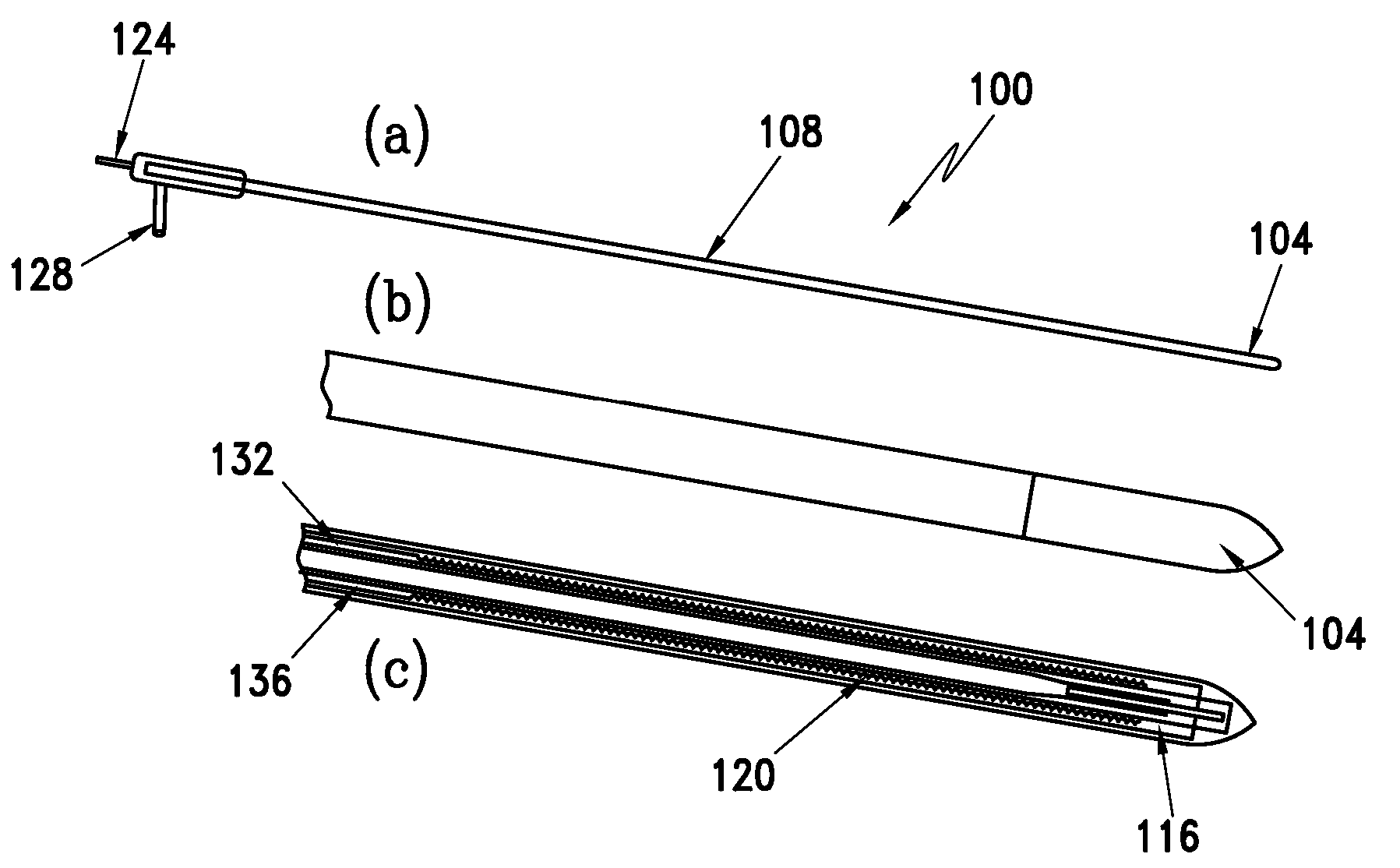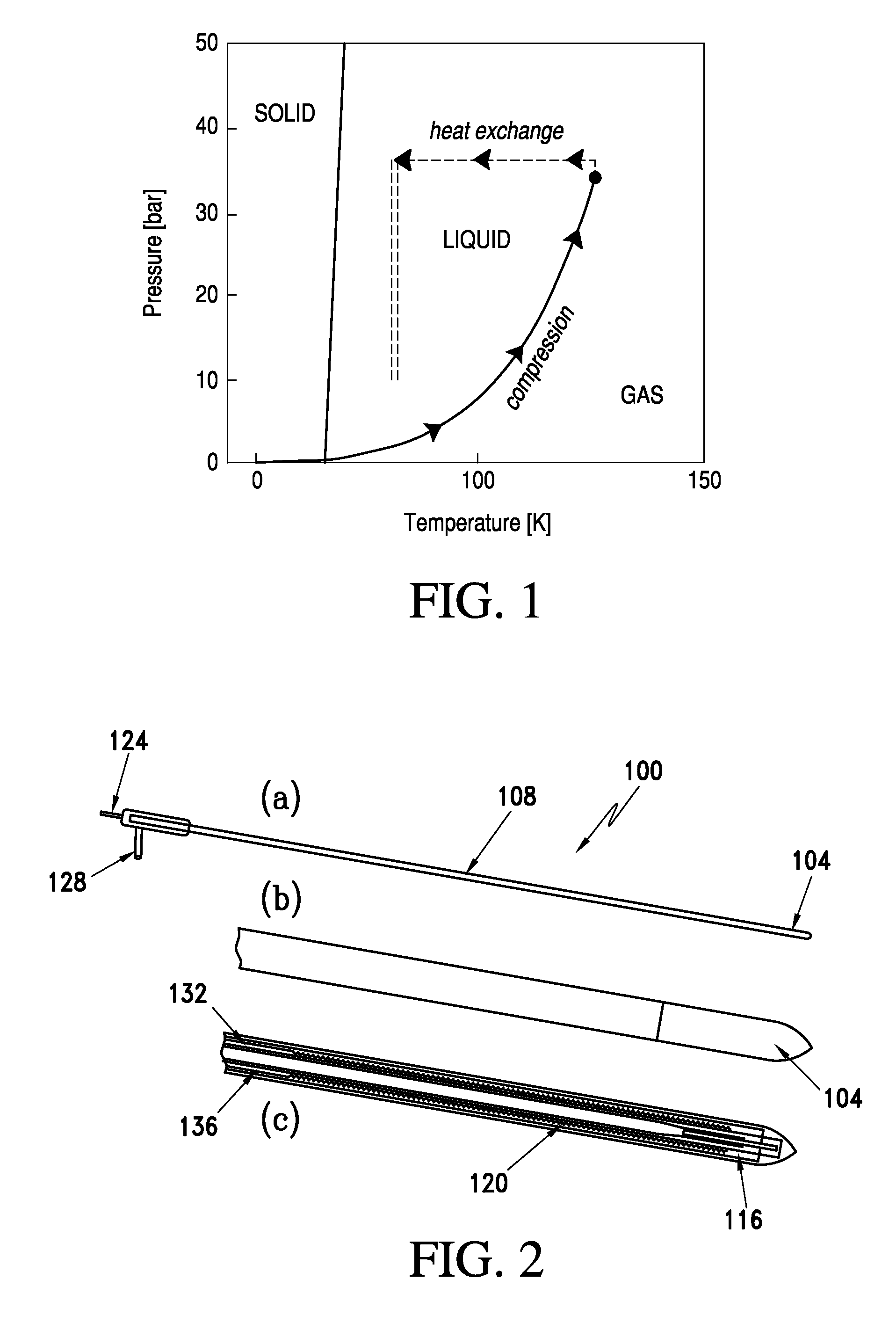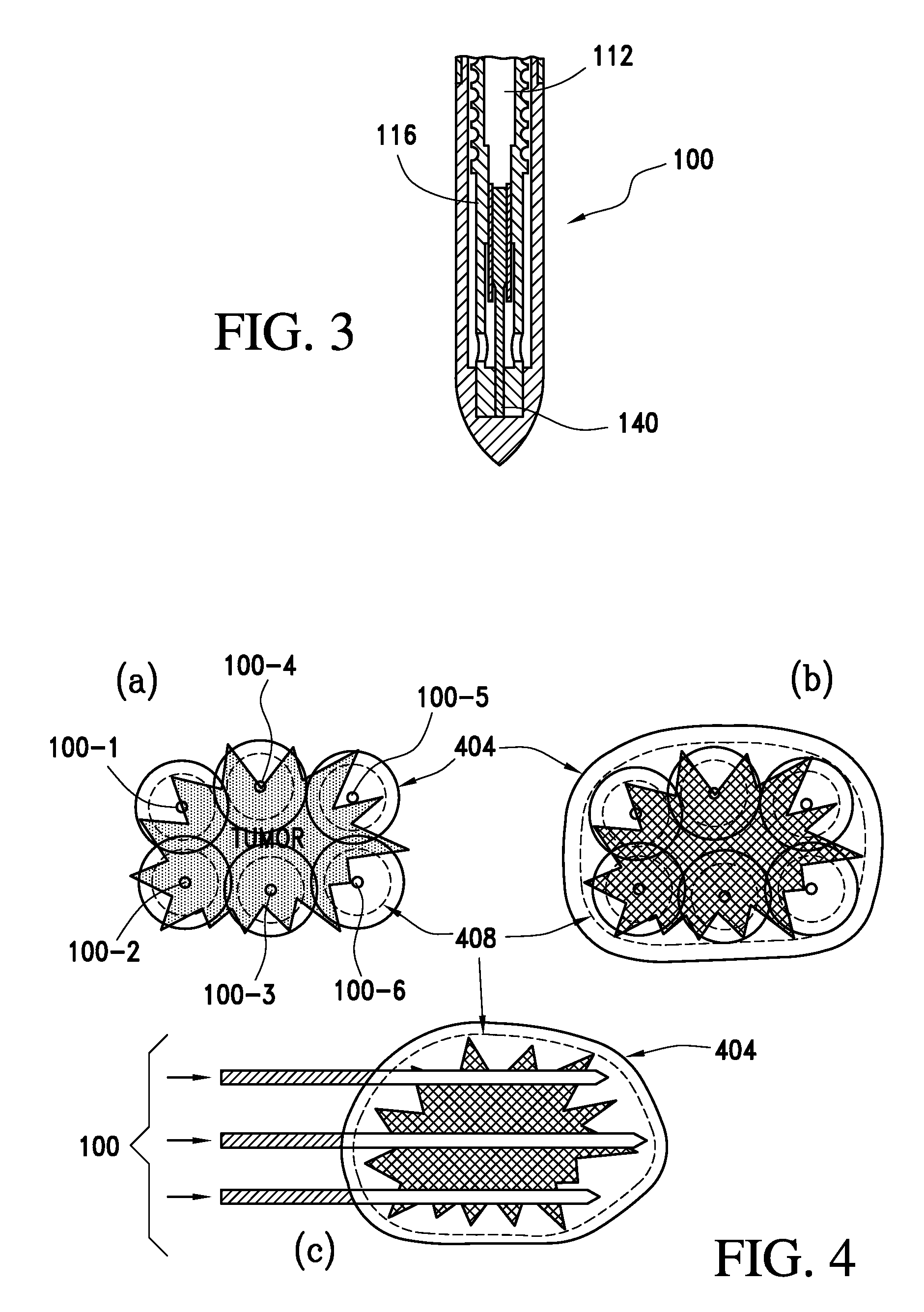Cryotherapy probe
- Summary
- Abstract
- Description
- Claims
- Application Information
AI Technical Summary
Benefits of technology
Problems solved by technology
Method used
Image
Examples
Embodiment Construction
1. Introduction
Thermodynamics of Cooling Cycles
[0025] As an initial matter, we analyze and compare two methods of cryogenic refrigeration that are currently being used in various cryotherapy tools: a) isoenthalpic expansion cooling (the Joule-Thomson process) from a high-pressure gas (Ar or N2), and b) direct injection of a liquid coolant (liquid N2, hereafter LN2) into the tip of a cryoprobe.
[0026] a. Joule-Thomson (JT) Cooling
[0027] This refrigeration technique uses a high pressure gas supply (˜6000 psi), a JT expansion jet that cools the tip of the probe, and a small heat exchanger that is mounted inside the cryoprobe. Assuming ideal (perfect) heat exchange between the gas streams, the maximum cooling power of the JT cooling is equal to 1.86 kJ / mol for Ar gas at its boiling temperature (and one atmosphere pressure) TAr=87 K. If nitrogen gas is used, the maximum cooling power is about 1.6 times less i.e. 1.15 kJ / mol.
[0028] The main disadvantage of this method is very large ga...
PUM
 Login to View More
Login to View More Abstract
Description
Claims
Application Information
 Login to View More
Login to View More - R&D
- Intellectual Property
- Life Sciences
- Materials
- Tech Scout
- Unparalleled Data Quality
- Higher Quality Content
- 60% Fewer Hallucinations
Browse by: Latest US Patents, China's latest patents, Technical Efficacy Thesaurus, Application Domain, Technology Topic, Popular Technical Reports.
© 2025 PatSnap. All rights reserved.Legal|Privacy policy|Modern Slavery Act Transparency Statement|Sitemap|About US| Contact US: help@patsnap.com



